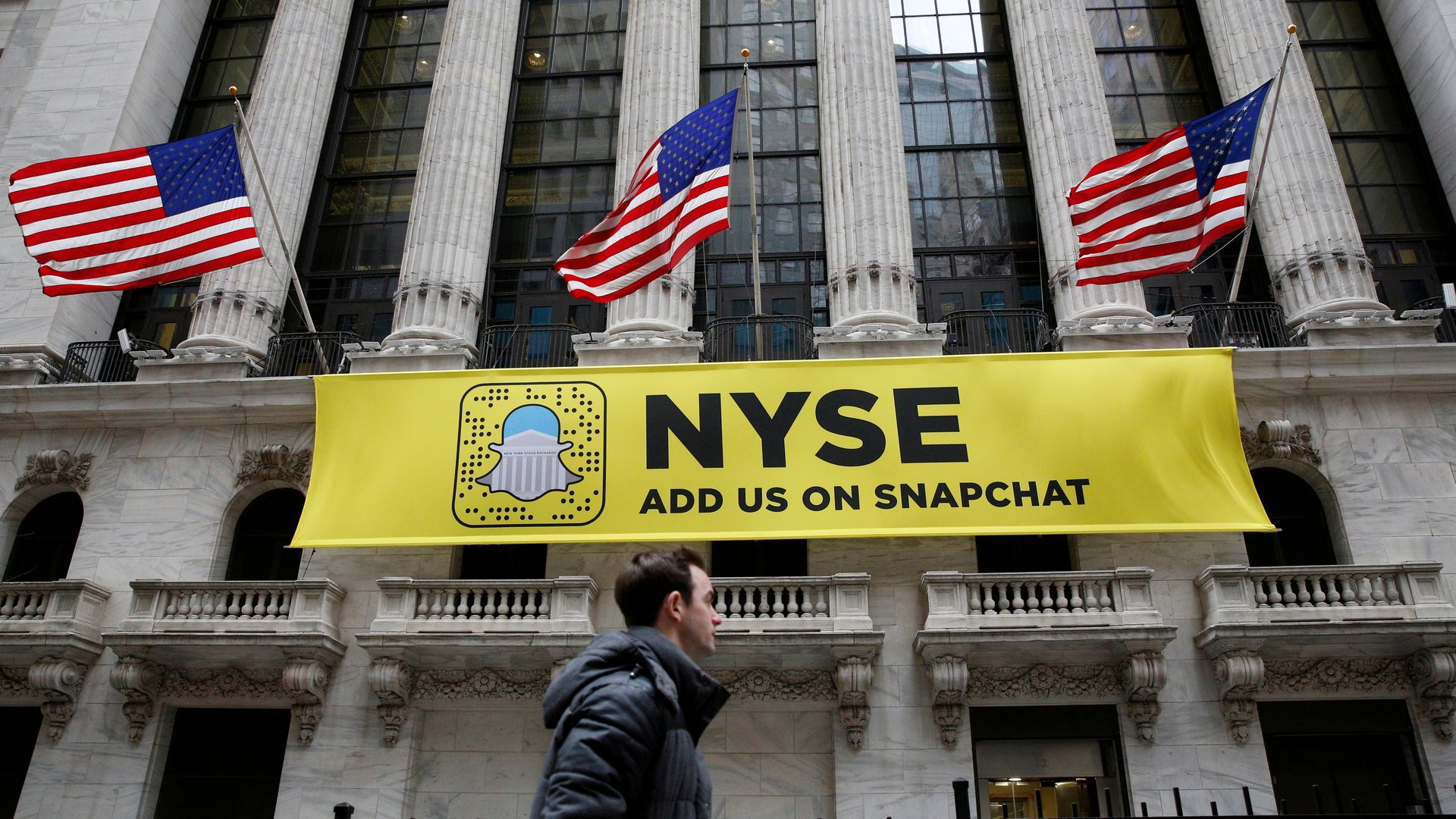Snap has to start proving what it means to be a camera company right… now
The fun part of going public is now over for Snap.


The fun part of going public is now over for Snap.
On March 2, the company behind ephemeral messaging app Snapchat plans to list itself on the New York Stock Exchange with a price tag of $17 per share, according to CNBC. That will value the company—started by three Stanford students and once written off as little more than a teen sexting app—at about $24 billion.
Snap will release 200 million shares on Thursday, none of which have voting power. The share price, above the $14-$16 range the company had communicated in filings with the US Securities and Exchange Commission, suggests that Snap’s recent investor road show generated significant enthusiasm about its business prospects. Now Snap just needs to turn those prospects into realities.
Snap is a camera company
In its public filings, and on its corporate website, Snap refers to itself as “a camera company.” But what that actually means is open to some creative interpretation. Snap only has one hardware product on the market—Spectacles, a $130 pair of Bluetooth-connected sunglasses that capture short videos that can be uploaded to Snapchat. Snap only started selling Spectacles at pop-up locations a few months ago, and made them available online just last week.
While Snapchat is a camera-driven app—the majority of messages sent between users contain videos or photos taken with users’ phones—it seems a stretch to think that this is what CEO Evan Spiegel means by “camera company.” In its filings, Snap called Spectacles its “latest effort to reinvent the camera,” implying that there have been other efforts in the past.
There is speculation that Snap is exploring additional physical cameras as well. Reports over the past two days suggest the company has looked into building both a drone and a 360-degree camera recently. If Spectacles are designed to most effectively record Snaps from the perspective of the user, it’s easy to see how a drone or 360 camera could provide new, immersive ways to take videos for Snapchat. But neither of these are simple businesses to enter. The drone market, especially at the higher end, is contracting around a few strong players, such as the Chinese firms DJI and Yuneec, and consumer-level 360-degree photography is still in its infancy, with relatively few strong options available.
Snap wasn’t immediately available to comment on its hardware plans.
In its SEC filings, Snap listed a host of competitors—Facebook, Twitter, and Google among them—but none that are solely focused on hardware. Spectacles could position Snap to generate significant revenue from hardware, but the company would do well to look at GoPro, another IPO debutante that has struggled to branch out into drones and 360-degree cameras. GoPro is now trading at about $9, barely a tenth of its highest closing price in 2014.
Snap is not a profitable company
Notably for would-be investors, Snap’s filings also laid out how far it is from profitability. In 2016, the company lost $514 million, up 38% from the $372 million it lost the year before. Snap is generating revenue—$404 million last year—but user growth has started to stagnate, and most of that revenue comes from North American users. The company’s cost of doing business is also very high: To bring in that $404 million, Snap had to spend $925 million, with a large chunk of that going to the server space it buys from Google.
If Snap can’t figure out how to lower its costs or generate significantly more revenue from its non-American users, Snap will struggle to turn a profit. The company should also expect to address the effectiveness of Snapchat ad placements, how the company treats clients, and whether it’s headed down the same floundering path as Twitter.